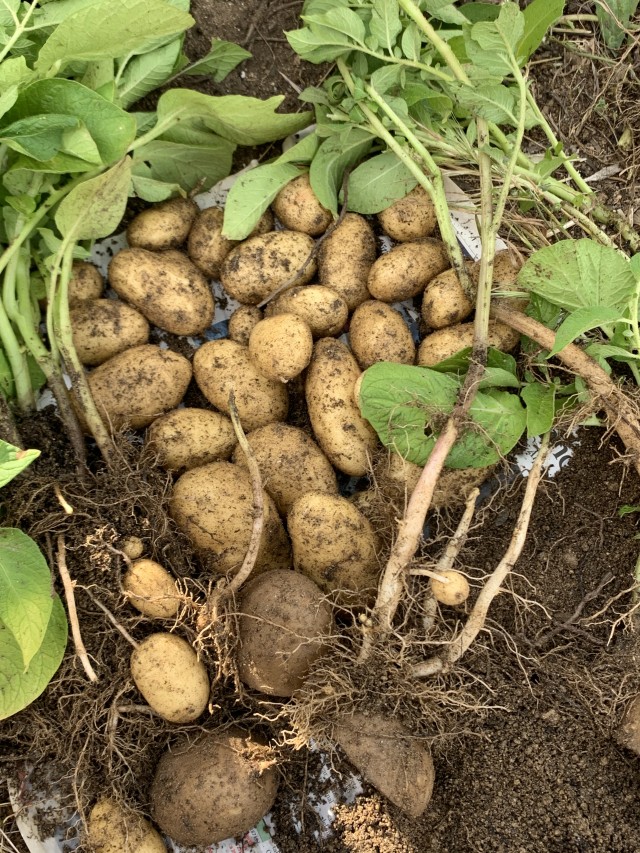Your business has more in common with an allotment than it may seem, Part 1
What would you think if a colleague told you that an allotment and a company have more in common than you might imagine? You would probably think that your colleague spends too much time in her garden. And she does, and to her credit! Deborah Gray is the Founder and Managing Director of Canela, and in her spare time she also grows vegetables in her own allotment. In this #CanelaInsights, she shares what gardening has taught her and why she thinks that nature has some valuable lessons to share.
This is just part 1 of two articles.
Like many people during the Covid-19 pandemic I took up a pastime that was possible to do under the lockdown restrictions. I have never been a fan of static bikes, (even less so after the latest series from Sex and the City) so I went outside and looked around my hither to neglected garden and thought here’s a place where I could get something done in a Covid-compliant way. Pretty much overnight I went from being an occasional herbs-in-pot grower to aspiring to grow and eat directly from my own garden.
The benefits of aspiring to live like this are endless so here are just a few; by growing your own food you cut out the plastic that shop bought food comes wrapped in and you also eliminate several stages from the food supply chain which has a positive impact on the environment. There is nothing better than the sensation of eating tomatoes still warm from the sun, or sending your children to hunt for potatoes in the soil, or plucking strawberries directly from the plant for dessert. Also growing our own food has also allowed me to spend precious screen-free time in the garden with my two children as we weed and dig and plant and prune and compost and wonder at nature’s marvels. In Spring and Summer when the garden is thrumming to the beat of insect wings, there’s a new courgette to be plucked every day, so we do a morning tour after breakfast and see what’s changed in the last 24 hours. Even in Winter when you might assume nothing is going on some hardy plants are prepared to put on a show like “pesols de Maresme” peas specific to the area in Catalonia where we live.

Aside from all the joy that comes from watching things grow. I have also come to realise that a lot of what is needed for a successful huerto (Spanish word for allotment) is also what is needed for running a successful business.
Everybody needs their own space
Every seed packet you buy comes with a clear set of measurements written on the packet. These indicate the distance you need to leave between respective plants in order for them to grow to healthy maturity. When you are first setting out to grow your own vegetables you may not have ever seen the plant that you are growing as a mature plant in a garden. Most of us have seen polished, shiny and uniform-sized vegetables in neat rows on supermarket shelves but not growing somewhere. To give you an idea, a courgette plant needs 1m2 whereas you can plant a lettuce every 10 cm.
This is also true for team members. Different team members need a different amount of metres squared of autonomy within which to flourish. If they feel crowded out or overly supervised they will not thrive. Conversely some team members require more supervision and closer attention in order to feel comfortable in their daily work. Unfortunately team members don’t arrive with their measurements written on the back of the packet so Leaders need to take time and effort and special attention to work out the right amount of space each individual needs in order to achieve their fullest potential.

Choose team members that complement each other
“Companion planting” is a way of growing vegetables where you deliberately place different species of plants close to each other because they are mutually beneficial. A tall plant like peas or beans can provide shade for a low plant such as a strawberry which in turn provides soil cover. And it’s not only a question of height or size where plants are complementary, what one plant needs from the soil another plant puts into the soil, or one plant can deter certain insects that another attracts. Garlic and onions help to deter insects that bother tomato plants, peas put nitrogen in the soil etc etc.
Team members function in the same way which is why it’s important to avoid a Russian doll approach to contracting new people. The more neuro-diverse your team is, the better, broader and bolder your ideas will be. In a PR agency you need creative people. But not all team members are creative in the same way. Some people have great, big, bold ideas but do not have the ability to develop them further into a practical outcome. Whilst others don’t necessarily always have the big ideas but they have the gift of converting someone else’s idea into a practical reality. These two styles of creativity are complementary and each type needs the other in order to get the best result for the client.

Now we’ll leave you some time to reflect and look at the functioning of your team, yourself and your garden, if you’re lucky enough to have one! What kind of creative person are you? How much space do you need? What about your colleagues?
We’ll be back with part 2 soon.